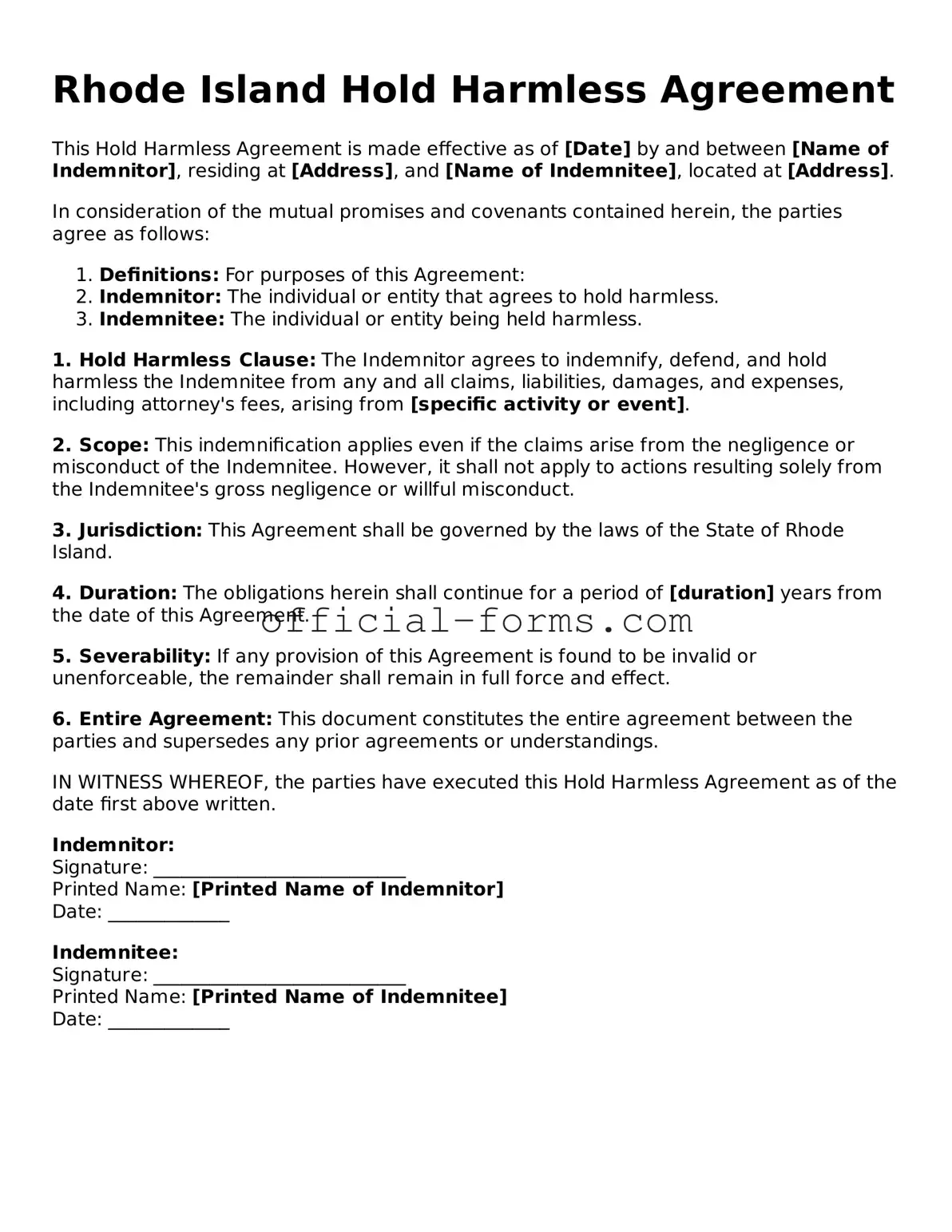Official Rhode Island Hold Harmless Agreement Document
The Rhode Island Hold Harmless Agreement form is a legal document designed to protect one party from liability for certain risks associated with an activity or event. By signing this agreement, individuals acknowledge the potential dangers involved and agree not to hold the other party responsible for any injuries or damages that may occur. This form serves as a crucial tool for promoting safety and responsibility in various situations.
Open My Hold Harmless Agreement Now
